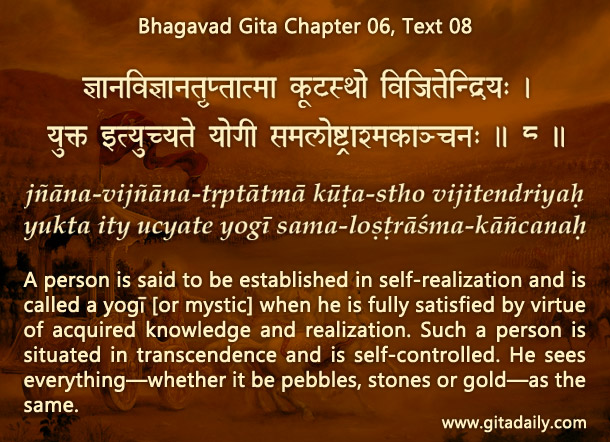The Bhagavad-gita (06.08) shares a puzzling recommendation: see stone and gold equally.
How is this possible?
To understand, let’s analyze the statement at three progressive levels:
- Detached material level:
Gita wisdom indicates that the value of material objects is relative. For example, cricket is deemed valuable by Indians, but not Americans; baseball is deemed valuable by Americans, but not Indians. Fashions are another example. If a dress is dubbed fashionable, its value skyrockets. If it is dubbed unfashionable, its value nosedives.
This relativity of value extends to everything material – even paper currency, which many people consider objectively valuable. If economic upheavals cause currency devaluation, the notes remain, but their noteworthiness diminishes or even vanishes.
By dispassionately extending such material analysis to stone and gold, we can see the relativity of the value-tags assigned to them, and thereby see both equally.
- Detached spiritual level:
Gita wisdom gives us knowledge of our identity as indestructible non-material souls. This knowledge helps us recognize that we spiritual beings can never get any happiness from anything material, so we can equally disregard everything material, be it stone or gold.
- Engaged Devotional level:
Gita wisdom soars higher than the previous detached intellectual (jnani) level to the engaged devotional (bhakti) level. At this pinnacle, we value material things from Krishna’s perspective, based on whether they can be utilized in his service and whether they can bring us closer to him. Consequently, devotees may accept stone as if it were gold if it can be used to construct a temple for him and may reject gold as if it were stone if it allures them away from him.
By this Krishna-centered equality of vision, we can stay spiritually focused amidst materially alluring and repelling circumstances, and steadily march towards Krishna.


Leave A Comment